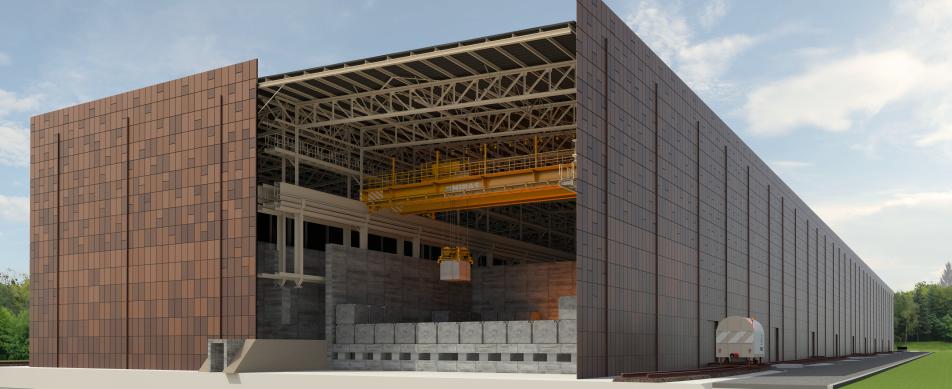
Ondraf/Niras applied to FANC for the licence initially in 2013 but FANC requested additional clarifications and further information requiring answers to some 300 questions. The last of these queries was answered at the end of 2017 and Ondraf/Niras then integrated them into the dossier, submitting the completed version of the application to FANC in February 2019. This document included more than 20,000 pages demonstrating the safety of the facility in the short and long term.
This was evaluated by the Scientific Council - an independent body composed of experts in the nuclear sector – after which a royal decree was published granting the nuclear licence.
Ondraf/Niras said the short-lived low- and medium-level radioactive waste, falls within 'category A', which means it remains radioactive for hundreds of years. "Category A waste will be conditioned in concrete containers, which in turn will be placed in concrete modules. After filling, the modules are covered with several layers of soil, creating a mound."
The procedure for selecting the contractor was launched at the beginning of the year with the aim of starting construction work in 2024 for operation within a few years.
"With this permit, we close a project that has been running for ten years, from the first permit application through numerous requests for advice and additional questions," said FANC Director General Frank Hardeman. "With the permit text that we now have, FANC has guarantees about the long-term safety of the repository, so that we can transfer the radioactive waste to future generations in the best possible way. Naturally, once the installation is operational, FANC will continue to carry out on-site checks and inspections to ensure that everything is proceeding as stipulated in the permit."
"With the imminent decommissioning of a number of our Belgian nuclear reactors, the safety and security of the associated radioactive waste are a priority," said Minister of the Interior Annelies Verlinden.
The storage facility will be built in the nuclear zone on the territory of Dessel, near the border with the municipality of Mol. This is the first time that a radioactive waste storage facility has been built in Belgium.
The storage facility consists of several modules. Construction will take place in two phases: 20 modules in the first zone and 14 in the second zone, each divided into two rows. A module contains about 900 monoliths and measures 11 metres high and about 25 metres by 27. The modules will be constructed on an embankment composed of a layer of gravel 60 centimetres thick, covered with a mixture of sand and cement two metres thick. They will always be above water level and protected from ascending humidity. An inspection gallery will separate two rows of modules. Under each module there will also be an inspection space and a drainage system. This makes it possible to detect any cracks or water infiltrations in time and to take the necessary measures. Inspections will be carried out by robotic devices.
During filling, a temporary steel roof will cover the modules to protect them from the weather. When a module is filled with monoliths, the remaining empty spaces will be filled with gravel, and then sealed using a concrete closing slab. Once all the modules in an area are filled, the installation will be closed and the steel roof replaced with a permanent cover made up of different natural and artificial protective layers. It will take approximately 50 years to complete the two zones.
One of the major functions of the permanent cover is to limit water infiltration. In addition, the role of the earth layers of the cover is to protect the concrete barriers from degradation. The cover will have a total thickness of more than 5 metres and will eventually give the storage modules of the two zones the appearance of two hills in the landscape.
The storage facility and its surroundings will be subject to permanent monitoring for 350 years. The entire storage comprises several stages: operating phase (years 0-95); closing phase (years 95-100); nuclear control phase (years 100-350).